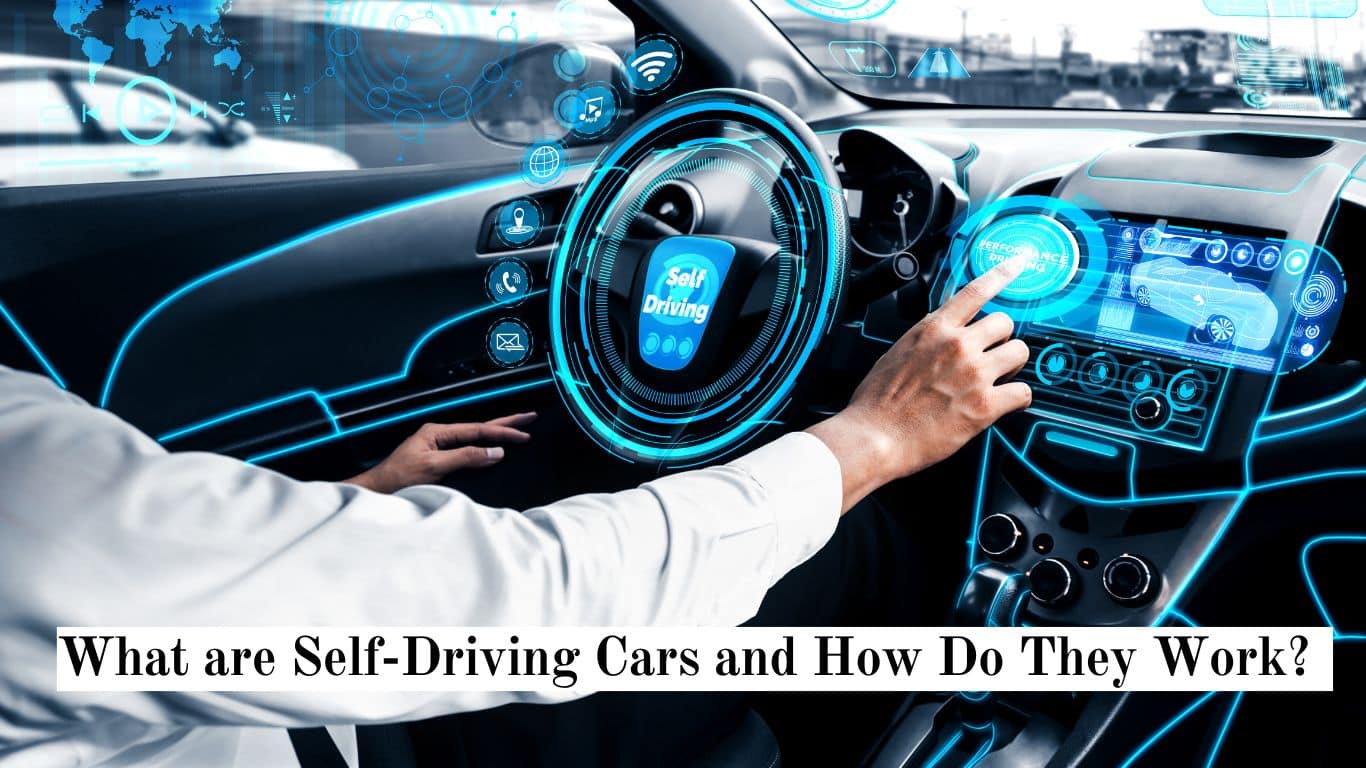A self-driving car, also known as an autonomous car or driverless car, is a vehicle that can travel from one place to another without a human driver. It uses a combination of sensors, cameras, radar, and artificial intelligence (AI) technology to navigate the roads. To be considered fully autonomous, the car should be able to drive to a destination without any human intervention, even on roads that are not specifically designed for self-driving cars.
Companies like Audi, BMW, Ford, Google, General Motors, Tesla, Volkswagen, and Volvo are involved in developing and testing autonomous cars. For example, Google has tested a fleet of self-driving cars, including Toyota Prius and Audi TT models, which have successfully driven over 140,000 miles on California streets and highways.
How do self-driving cars work?
Self-driving cars rely on AI technology to operate. Developers use large amounts of data from image recognition systems and employ machine learning and neural networks to build autonomous driving systems.
Neural networks analyze patterns in the data, which are then used by machine learning algorithms. The data includes images captured by the car’s cameras, which help the neural network learn to identify various elements of the driving environment, such as traffic lights, trees, curbs, pedestrians, and street signs.
Levels of Autonomy in self-driving cars
The U.S. National Highway Traffic Safety Administration (NHTSA) has established six levels of automation for self-driving cars. These levels range from Level 0, where humans are fully responsible for driving, to Level 5, where the car is capable of completely autonomous driving in any situation. Here are the levels that follow:
Level 0: No automation. The human driver is in control of all driving tasks.
Level 1: Driver assistance system. The car can assist with steering, braking, or accelerating, but not simultaneously. It includes features like rearview cameras and lane departure warnings.
Level 2: Partial automation. The car can steer and control acceleration or braking simultaneously, but the driver must remain fully aware and ready to take over if needed.
Level 3: Conditional automation. The car can perform all driving tasks under certain circumstances, such as parking. However, the driver must be ready to take control when necessary and is still considered the primary driver.
Level 4: High automation. The car can handle all driving tasks and monitor the driving environment in specific circumstances. The human driver is not required to pay attention to the road in these situations.
Level 5: Full automation. The car’s autonomous driving system can operate the vehicle in all circumstances, and the human occupants are passengers who do not need to drive.
Safety and challenges of self-driving cars
Self-driving cars face challenges in ensuring safety and addressing various road conditions. They must be capable of identifying and reacting to different objects, such as obstacles, animals, and people, in their path. Additionally, factors like tunnels that interfere with GPS signals and construction projects that require complex decisions can pose challenges.
The car’s systems need to make quick decisions about slowing down, swerving, or maintaining normal acceleration. Developers are continuously working to improve these systems as there have been instances where self-driving cars have hesitated or swerved unnecessarily when detecting objects on or near the road.
Liability in the event of accidents involving autonomous cars is also a concern, as there is no established framework for determining responsibility. Cybersecurity risks are another important consideration, as there is a potential for hackers to target the software that operates self-driving vehicles. Automotive companies are actively working to address these risks.
History of self-driving cars
The development of self-driving cars began with incremental automation features for safety and convenience. Cruise control and antilock brakes were among the initial automation features introduced before the year 2000. In the early 2000s, advanced safety features like electronic stability control, blind-spot detection, and collision and lane shift warnings became available.
From 2010 to 2016, vehicles started incorporating advanced driver assistance capabilities such as rearview video cameras, automatic emergency brakes, and lane-centering assistance. Since 2016, there has been a move toward partial autonomy, with features that help drivers stay in their lane and technologies like Adaptive Cruise Control (ACC) and self-parking becoming more common.
Fully automated vehicles are not widely available to the public yet and may take several more years to develop. The U.S. National Highway Traffic Safety Administration provides guidance for introducing autonomous driving systems onto public roads. As self-driving technologies advance, the guidance will evolve accordingly.
Currently, self-driving cars are not legal on most roads. Nevada was the first jurisdiction to allow testing of driverless cars on public roads in 2011, and other states like California, Florida, Ohio, and Washington, D.C., have followed suit in subsequent years. However, the concept of driverless cars dates back much further, with Leonardo da Vinci designing a prototype in the late 15th century. His design included programmable steering and the ability to follow preset courses using springs for power.
